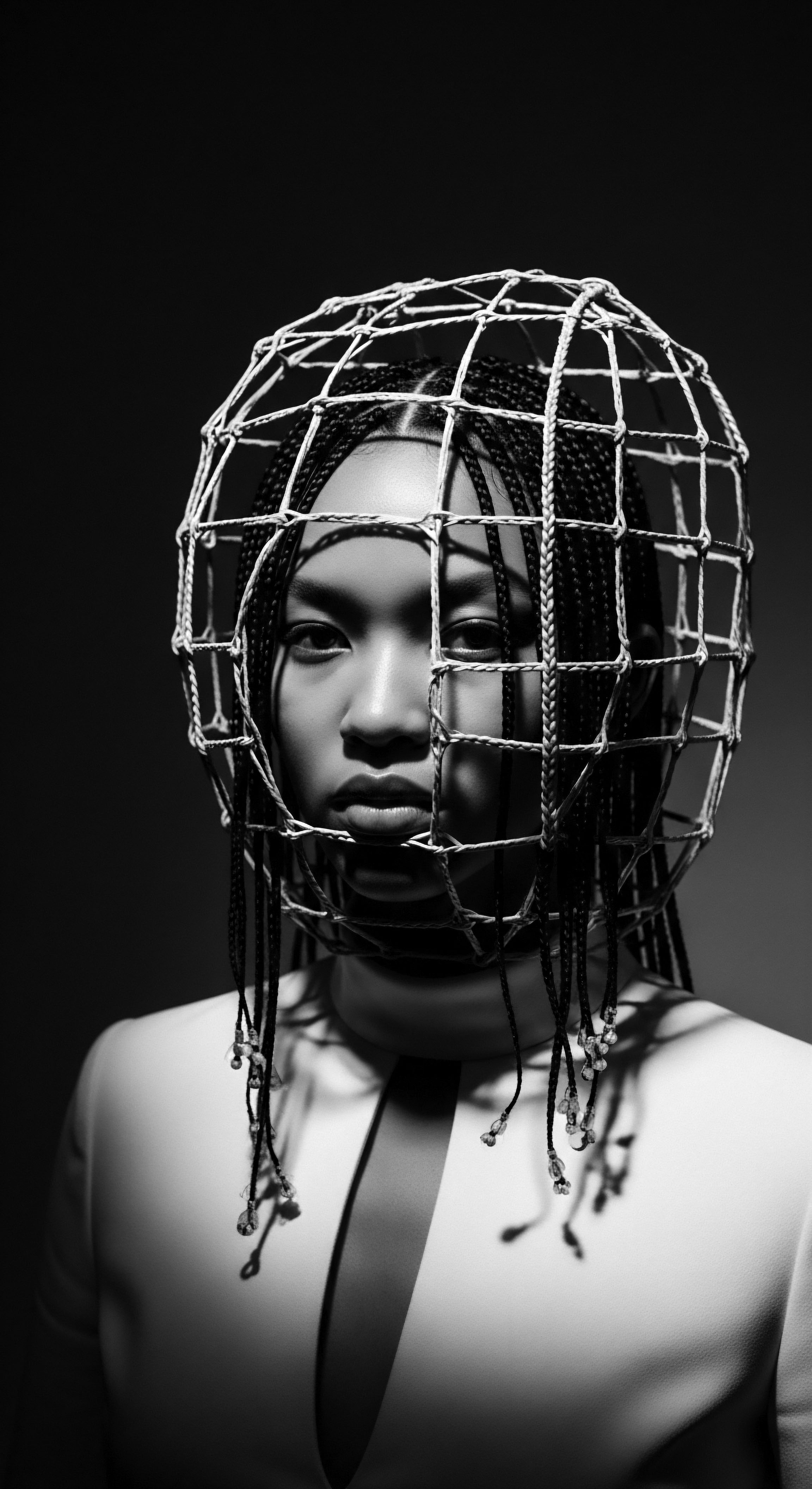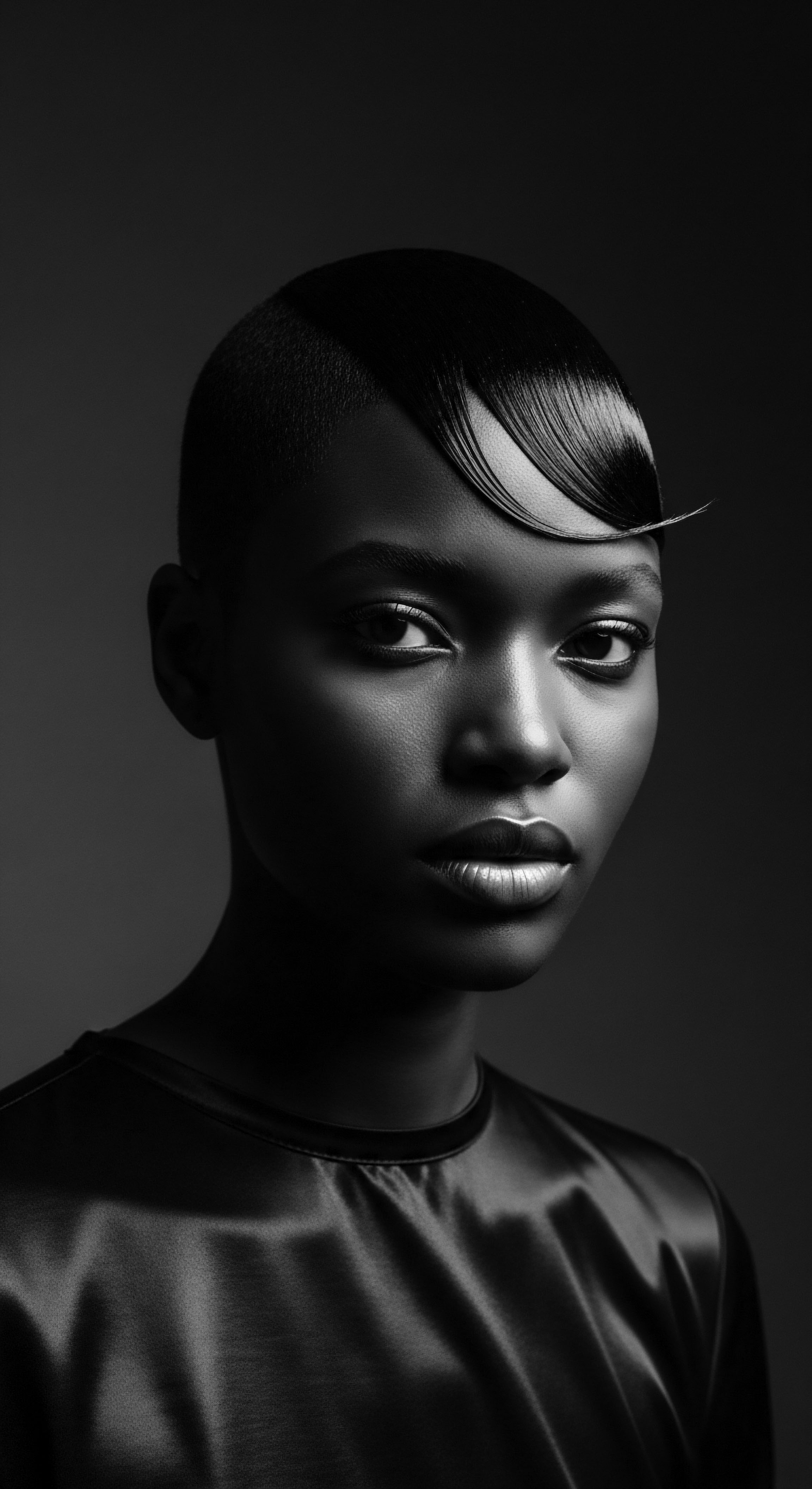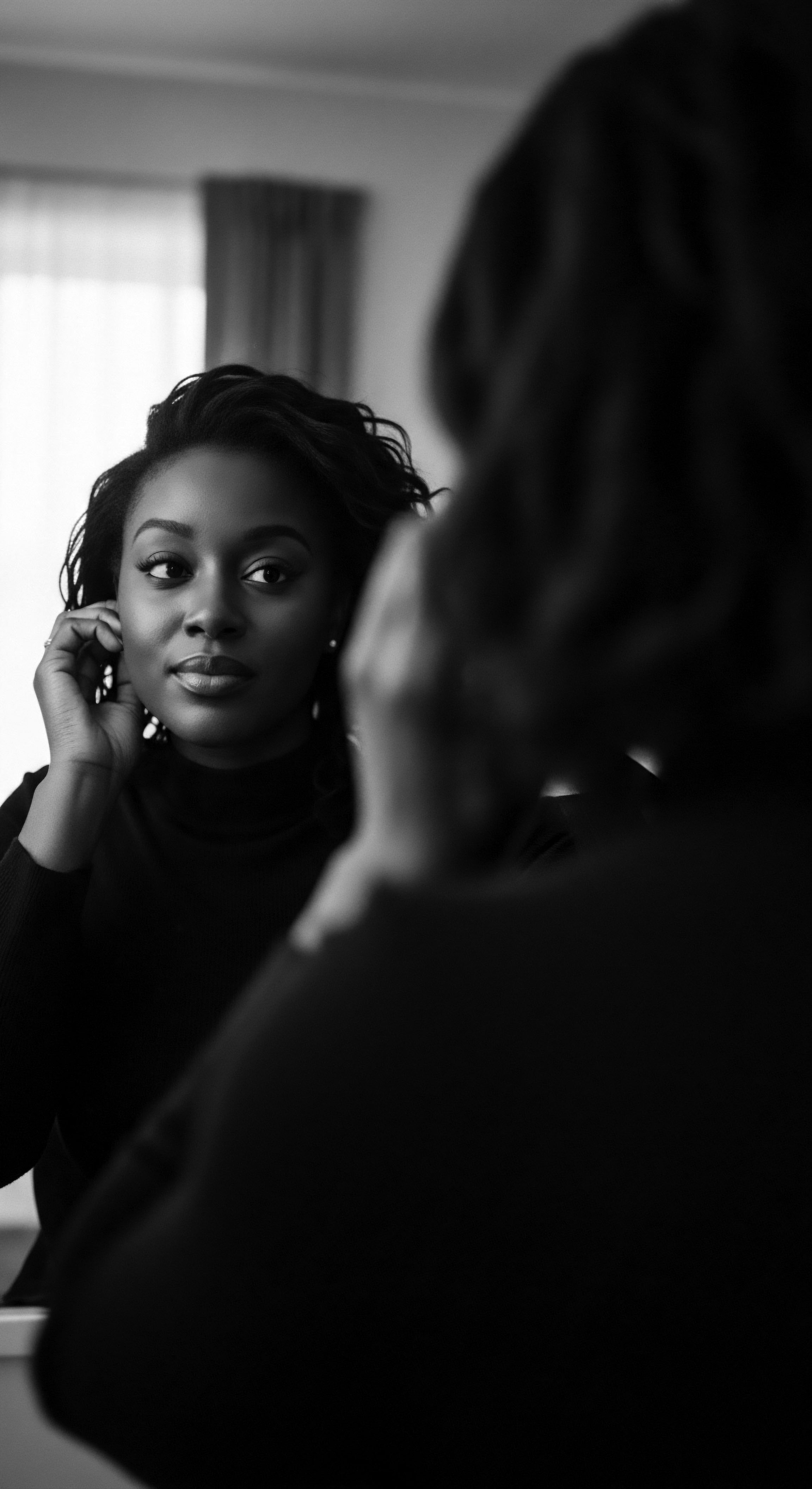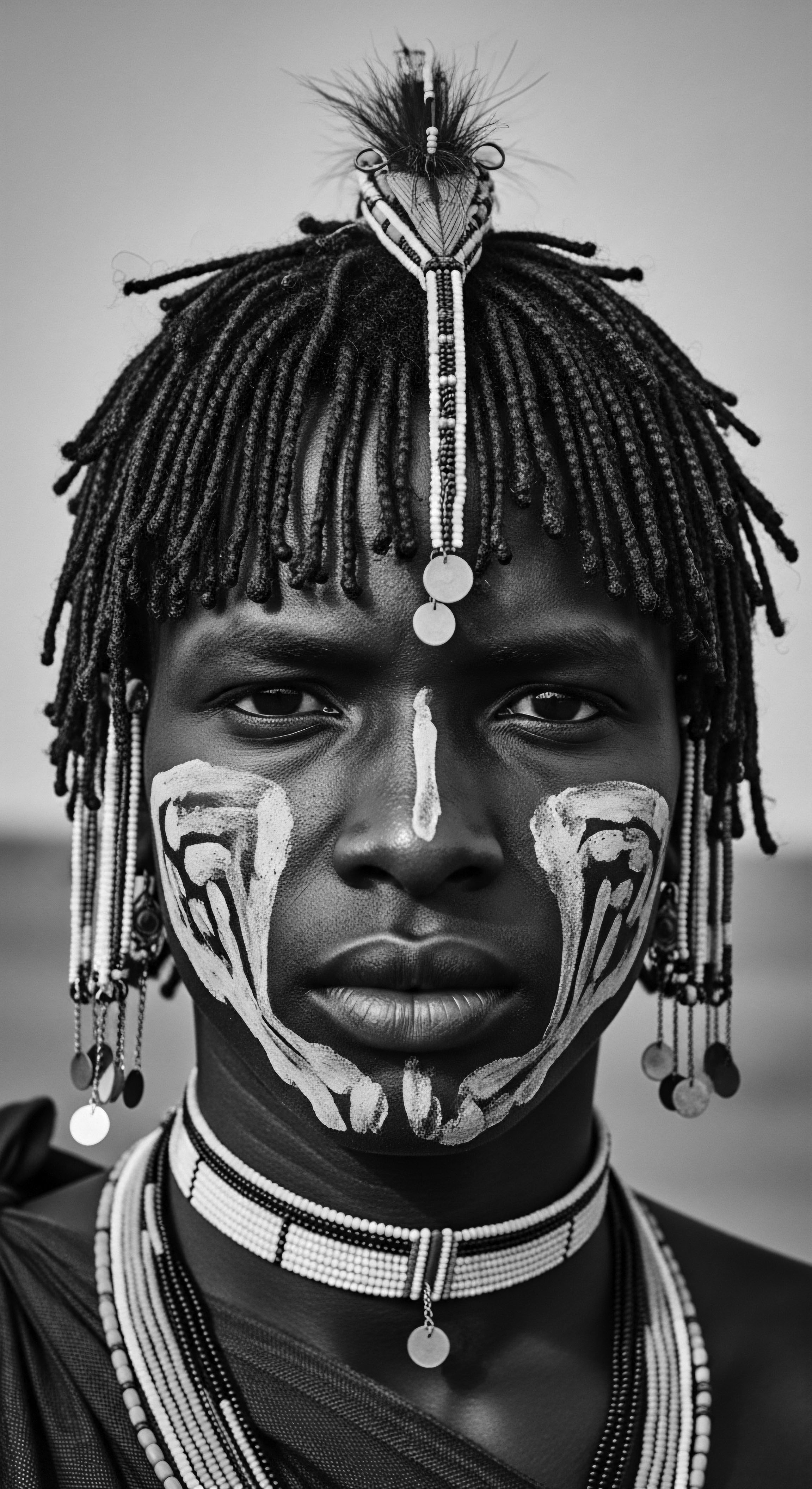
Roots
The very strands that crown us, alive with their unique twists and coils, carry stories etched not just in their genetic makeup, but in the echoes of what sustained our ancestors. How did historical diets affect textured hair vitality? This question opens a vast, undulating landscape of understanding, a journey into the ancestral wisdom held within each curl and kink.
For those of us who carry the legacy of textured hair, this isn’t an academic exercise; it is a resonant chord, a connection to lineage, a whisper from the past that speaks to the strength and resilience of our heritage. It’s a recognition of how profoundly what we consume has shaped, and continues to shape, the very essence of our hair’s health, its radiance, its unique expression.
Consider the deep past, before the seismic shifts of forced migration and colonial disruption. Across continents, particularly in Africa and indigenous communities globally, diets were often rich, diverse, and intimately connected to local ecosystems. These were diets that nourished not merely the body, but the very vitality of the hair itself. We speak of nutrient density ❉ the bounty of whole grains, pulses, tubers, wild-foraged greens, lean proteins from sustainably hunted animals or freshly caught fish, and a spectrum of fruits.
Such sustenance provided the foundational building blocks for keratin, the fibrous protein that forms the hair shaft. Without adequate protein, iron, zinc, and a host of B vitamins, hair struggles to grow, becoming brittle, dull, or thinning. This elemental truth remains unchanging, a biological constant that transcends time and geography.

How Did Ancestral Diets Fuel Hair’s Structure?
The anatomical structure of textured hair, with its elliptical or flattened cross-section and numerous bends along the shaft, inherently makes it more prone to dryness and breakage. This unique architecture means its cuticle layers, which protect the inner cortex, may not lie as flat as in straight hair, leading to increased moisture loss. Consequently, the demands on ancestral diets for hair health were perhaps even more pronounced. A diet robust in essential fatty acids, for instance, sourced from nuts, seeds, and certain fish, would have provided the necessary lipids to lubricate the scalp and hair from within, bolstering the hair’s natural barrier and helping to seal moisture.
Vitamin A, found in vibrant orange and green vegetables, played a crucial supporting role in sebum production, a natural conditioner for the scalp. Vitamin C, from fresh fruits, was essential for collagen synthesis, supporting the dermal papilla, the structure at the base of the hair follicle that receives nutrients.
Ancestral diets, abundant in diverse nutrients, laid the biological groundwork for vibrant, resilient textured hair.
The resilience of ancestral hair was a direct reflection of bodies well-nourished by the earth’s offerings. It wasn’t just about avoiding deficiencies; it was about thriving. The consistent intake of a wide variety of bioavailable nutrients meant that hair follicles received a steady supply of what they needed for optimal function. Take, for instance, the traditional diets of many West African communities, rich in staples like millet, sorghum, yams, cassava, leafy greens, and protein sources like beans, groundnuts, and fish.
These staples delivered complex carbohydrates for sustained energy to hair cells, plant-based proteins for keratin, and a wealth of micronutrients. The diversity ensured a complete amino acid profile, vital for strong hair.
| Traditional Food Source Millet, Sorghum, Yams |
| Key Nutrient Contribution for Hair Vitality Complex Carbohydrates, B Vitamins, Iron |
| Hair Benefit from This Nutrient Energy for follicle growth, improved circulation, prevents shedding |
| Traditional Food Source Leafy Greens (e.g. Collard Greens, Spinach) |
| Key Nutrient Contribution for Hair Vitality Vitamins A, C, E, Iron, Folate |
| Hair Benefit from This Nutrient Sebum production, collagen synthesis, antioxidant protection, red blood cell formation for nutrient transport |
| Traditional Food Source Beans, Groundnuts, Fish |
| Key Nutrient Contribution for Hair Vitality Protein (complete amino acids), Zinc, Iron, Omega-3 Fatty Acids |
| Hair Benefit from This Nutrient Keratin building blocks, follicle health, prevents breakage, anti-inflammatory for scalp health |
| Traditional Food Source Pumpkin Seeds, Sesame Seeds |
| Key Nutrient Contribution for Hair Vitality Zinc, Iron, Omega-6 Fatty Acids |
| Hair Benefit from This Nutrient Cell reproduction, oil gland function, reduced hair loss, scalp nourishment |
| Traditional Food Source Citrus Fruits, Berries |
| Key Nutrient Contribution for Hair Vitality Vitamin C |
| Hair Benefit from This Nutrient Collagen formation, iron absorption, antioxidant defense |
| Traditional Food Source Understanding these nutritional foundations allows us to honor the wisdom of ancestral dietary patterns for enduring hair health. |

The Ancestral Shift and Hair’s Vulnerability
A profound disruption to this symbiotic relationship between diet and hair vitality occurred with the transatlantic slave trade and the subsequent enslavement of African peoples. The forced removal from nutrient-dense ancestral lands and the imposition of meager, often mono-crop diets on plantations had devastating effects on overall health, and by direct extension, hair vitality. Rations typically consisted of cornmeal, molasses, and salted pork, profoundly lacking in fresh fruits, vegetables, and diverse protein sources. This dramatic nutritional decline led to widespread deficiencies, manifesting in conditions like pellagra (niacin deficiency), scurvy (vitamin C deficiency), and anemia (iron deficiency).
While direct observations on hair from this period are scarce in historical records, the biological reality is that hair, as a metabolically active but non-essential tissue, would be among the first to suffer. Hair growth would slow, strands would thin, and breakage would become common, a subtle yet poignant marker of deep systemic distress. Kenneth F. Kiple and Virginia H. Kiple (1977), in their work detailing the biological portrait of enslaved populations, extensively document the profound nutritional challenges faced, painting a stark picture of bodies struggling to survive, let alone thrive.
This historical trauma to the body, reflected in hair’s compromised state, underscores a crucial aspect of textured hair heritage ❉ its inherent resilience. Despite these severe deprivations, the hair persisted, a testament to the enduring life force within those forced into unthinkable circumstances. The subtle variations in hair quality seen across generations today can sometimes hint at the dietary patterns and nutritional landscapes our forebears navigated. It reminds us that hair vitality is not a superficial concern; it’s a deep, genetic memory, a living archive of our collective journey.
The understanding that hair health is an outward manifestation of internal well-being is not a modern revelation; it is an ancestral truth. Traditional healers and community elders often viewed a person’s hair as a mirror of their internal state, reflecting spiritual balance, physical health, and connection to source. When diets shifted, so too did this reflection, creating new challenges for care and new narratives for resilience within the heritage of textured hair. This deep lineage between the earth’s bounty, the body’s sustenance, and the hair’s unique expression forms the very roots of our current understanding.

Ritual
The ritual of caring for textured hair, passed down through generations, often became a profound act of self-preservation and cultural affirmation, especially when dietary impacts on vitality were keenly felt. How has historical dietary change impacted traditional hair practices? When hair’s inherent strength was compromised by nutritional deficiencies, traditional styling techniques and tools had to adapt, becoming even more focused on protection and gentle handling. The ancestral roots of protective styling, for example, were not solely aesthetic; they were often born of necessity, shielding fragile strands from environmental aggressors and mechanical stress, particularly when the hair lacked the internal resilience that a nourishing diet provides.

How Did Hair’s Condition Influence Traditional Styling?
Consider the intricate braiding patterns prevalent across various African cultures. These styles, such as cornrows, twists, and locs, were not merely decorative. They served practical purposes, minimizing tangling, reducing daily manipulation, and keeping the hair neatly contained. In eras when nutritional intake might have been inconsistent or poor, hair could become thinner, drier, and more susceptible to breakage.
In such circumstances, tightly braided or twisted styles offered a way to manage hair that lacked elasticity or strength, helping to retain length and protect vulnerable ends. The communal aspect of hair braiding, often performed by elder women, offered not just a physical transformation, but also a space for sharing wisdom, stories, and collective memory, solidifying its place within the broader cultural heritage.
Traditional hair styling, deeply rooted in protective practices, adapted to the hair’s condition, especially when vitality was challenged by diet.
The tools of hair care also speak to this adaptive wisdom. Traditional combs, often carved from wood or bone, featured wide, smoothly spaced teeth, designed to gently detangle kinky and coily textures without causing undue stress. Unlike modern brushes that might rip through weakened strands, these ancestral implements honored the hair’s delicate nature. The use of natural materials for styling aids, like plant fibers or animal bone, highlights a profound connection to the immediate environment, where sustenance for the body and care for the hair flowed from the same source.
- Sheanut Butter ❉ Traditionally rendered from shea nuts, this rich emollient provided deep moisture and a protective barrier for hair, compensating for potential internal dryness stemming from dietary gaps.
- Palm Oil ❉ A staple in many West African diets, palm oil was also applied topically, prized for its conditioning properties and its ability to add luster to hair that might otherwise appear dull from nutrient scarcity.
- Aloe Vera ❉ Used in various indigenous cultures, the gel from aloe vera offered soothing relief for the scalp and provided moisture to strands, counteracting irritation or dryness linked to internal imbalances.
The creation of wigs and hair extensions also carries a deep heritage, predating modern fashion trends. In many African societies, hair adornments, including extensions crafted from natural fibers or human hair, served as markers of status, age, or marital standing. When one’s own hair vitality was diminished, perhaps due to illness or poor diet, extensions allowed individuals to maintain cultural practices and community recognition without compromise.
This allowed for continued participation in social rituals where hair presentation held significant meaning. These practices illustrate an enduring ingenuity, a resourcefulness born from necessity, upholding cultural identity even when biological realities presented challenges.

What Historical Context Shaped Heat Styling Approaches?
Heat styling, in its ancestral forms, differed vastly from contemporary methods. While some traditional methods, like using heated combs, existed in certain cultures, they were often employed sparingly and with natural emollients to protect the hair. The general emphasis was on preserving the hair’s natural curl pattern rather than altering it with high heat. The concept of thermal reconditioning, a modern chemical process that permanently straightens hair, stands in stark contrast to ancestral practices.
This divergence speaks to a shift in beauty standards, influenced by external pressures and a departure from the inherent acceptance of natural hair textures that once defined many communities. The natural strength and elasticity of hair, supported by a healthy diet, meant less reliance on aggressive styling methods that could cause damage. When vitality was high, hair responded favorably to gentle manipulation and air-drying, making elaborate heat-dependent styling less of a daily necessity.
The interplay between diet and styling also manifests in the hair’s ability to hold certain styles. Well-nourished hair possesses better elasticity and moisture content, allowing it to be manipulated into twists, braids, or coils that hold their shape and resist frizz. When hair lacks these internal qualities, styles may not last as long, or the hair might feel rough and resistant to styling.
Thus, the daily rituals of detangling, moisturizing, and styling were intricately connected to the internal landscape of the body, shaped by what was, or was not, consumed. These practices, honed over centuries, represent a living legacy of adaptation and deep wisdom, a collective wisdom that informs the conscious choices we make today for our textured strands.

Relay
The wisdom of our ancestors, echoing through time, speaks to the profound understanding that true hair vitality stems from within. How does historical diet inform holistic textured hair care today? This question takes us beyond mere topical application and into the realm of integrated well-being, where food is medicine, and the body, mind, and spirit are inextricably linked, especially through the lens of heritage.
Ancestral wellness philosophies often centered on seasonal eating, local sourcing, and a balanced intake of whole, unprocessed foods. This approach wasn’t just about survival; it was about thriving, about maintaining a state of equilibrium that manifested in vibrant health, including robust hair.

How Do Ancestral Wellness Philosophies Shape Modern Regimens?
When building personalized textured hair regimens today, we can draw deep inspiration from these ancestral frameworks. They remind us that the most sophisticated product can only do so much if the internal foundations are crumbling. For instance, the traditional use of fermented foods, common across many indigenous diets, fostered a healthy gut microbiome. An optimal gut plays a critical role in nutrient absorption, meaning that even if nutrients were present in the diet, their availability to the hair follicles depended on a healthy digestive system.
This understanding underlines the concept of holistic care ❉ hair health is not an isolated concern; it is a barometer of overall internal harmony. (Carney, 2001)
Holistic hair care, deeply rooted in ancestral wisdom, recognizes the profound link between internal well-being and hair vitality.
The nighttime sanctuary, with its essential sleep protection and bonnet wisdom, finds its historical basis in practical necessity and respect for the hair’s integrity. When hair might have been vulnerable due to dietary deficiencies, protecting it overnight became paramount. Bonnets, headwraps, and various coverings minimized friction against rough sleeping surfaces, preventing breakage and preserving moisture. This practice, often seen as a simple routine today, carries the weight of ancestral ingenuity, a testament to how communities innovated to preserve their hair’s strength and beauty against various odds.
Our understanding of ingredients for textured hair needs can be significantly deepened by exploring traditional plant-based remedies. These ancestral ingredients, often used for both internal nourishment and external application, offer a powerful connection to our heritage and provide effective solutions rooted in natural science.
- Baobab Oil ❉ Extracted from the seeds of the sacred baobab tree, this oil, rich in omega-3 fatty acids and vitamins A, D, E, and F, was traditionally consumed and applied topically. It offers deep moisturization and promotes scalp health, reflecting its dual purpose in diet and external care.
- Chebe Powder ❉ Used by the Basara Arab women of Chad, this blend of herbs (including lavender crotons, prunus mahaleb, cloves, and samour resin) is applied to the hair to retain moisture, leading to exceptional length retention. While not ingested, its efficacy highlights the profound knowledge of local flora for hair health.
- Fenugreek (Methi) ❉ Used in Ayurvedic and traditional African culinary and medicinal practices, fenugreek seeds are rich in protein, nicotinic acid, and lecithin, all beneficial for hair growth and strength. Soaked seeds were sometimes eaten or ground into a paste for topical application.
The problem-solving compendium for textured hair, addressing issues from excessive shedding to dullness, often finds echoes in ancestral approaches. When hair loss or thinning occurred, traditional communities would look to dietary adjustments and specific herbal remedies. A common thread across various ancestral practices was the emphasis on nutrient-dense broths, often made with bone or vegetable stock, providing easily absorbable minerals and collagen-building amino acids.
These were believed to strengthen the body from within, indirectly supporting hair re-growth and vitality. The knowledge that systemic issues, like those caused by insufficient nutrition, manifest in the hair, guided these traditional interventions.
The holistic influences on hair health, drawn from ancestral wellness philosophies, extend beyond mere nutrition. They encompass concepts of balance, stress reduction, and communal support. A balanced life, with adequate rest and community connection, was understood to contribute to overall well-being, which in turn supported healthy hair.
The resilience of textured hair, often enduring against odds, is not just a biological marvel; it is a cultural statement, a living testament to generations who found ways to nourish, protect, and celebrate their strands even amidst profound challenges. The ancestral wisdom contained within these practices offers a rich blueprint for navigating the complexities of modern hair care, always with a deep reverence for the heritage that sustains us.

Reflection
The journey through the intricate relationship between historical diets and textured hair vitality is a profound meditation. It reveals that our hair is far more than mere adornment; it is a living archive, each strand carrying the indelible mark of generational experiences, nutritional landscapes, and unwavering resilience. The very Soul of a Strand whispers tales of abundance from ancestral lands, of the stark trials faced during periods of scarcity, and of the enduring ingenuity found in communities determined to preserve their essence.
To understand how our forebears ate is to gain a deeper appreciation for the inherent strength and often overlooked vulnerability of textured hair. It reminds us that external care, however meticulous, is forever intertwined with internal nourishment. This recognition calls us to honor the wisdom of those who came before, whose deep connection to the earth and intuitive understanding of the body laid the foundations for our hair health today. Their practices, whether through the cultivation of nutrient-rich foods or the crafting of protective styles, were acts of profound self-care and cultural preservation.
As we move forward, armed with both ancestral knowledge and contemporary scientific understanding, the legacy of textured hair continues to unfold. It is a story not yet complete, constantly being written by the choices we make for our well-being and the reverence we hold for our heritage. Each conscious dietary choice, each gentle ritual, becomes a continuation of this sacred lineage, ensuring that the vitality of textured hair remains a radiant beacon, reflecting the strength, beauty, and unbound spirit of a people deeply connected to their past, present, and future.

References
- Carney, Judith A. (2001). Black Rice ❉ The African Origins of Rice Cultivation in the Americas. Harvard University Press.
- Kiple, Kenneth F. and Kiple, Virginia H. (1977). The Caribbean Slave ❉ A Biological Portrait. Cambridge University Press.
- Pollard, Helen M. (2012). The Oxford Handbook of Mesoamerican Archaeology. Oxford University Press. (Relevant for indigenous diets and health).
- Shils, Maurice E. Shike, Moshe, Ross, A. Catharine, Caballero, Benjamin, & Cousins, Robert J. (Eds.). (2006). Modern Nutrition in Health and Disease. Lippincott Williams & Wilkins. (For general nutritional science related to hair).
- Goody, Jack. (1998). Cooking, Cuisine and Class ❉ A Study in Comparative Sociology. Cambridge University Press. (General historical context of food and society).
- Falk, Pasi. (1994). The Consuming Body. Sage Publications. (For discussions of body and consumption, can be contextualized for hair).
- Davidson, Basil. (1991). Africa in History ❉ Themes and Outlines. Collier Books. (General historical context of African societies and practices).
